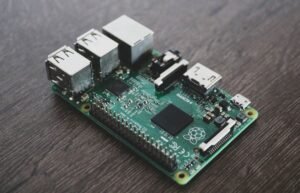Is Data Analysis Coding?
As data becomes increasingly important in decision-making processes, the ability to analyze and interpret data has become a valuable skillset. Data analysis involves extracting useful insights and patterns from large datasets to inform decision-making. One popular way to analyze data is through coding, using programming languages such as Python or R. In this article, we will explore whether data analysis can be considered coding and the benefits of learning to code for data analysis.
Key Takeaways:
- Data analysis involves extracting insights and patterns from large datasets using coding.
- Learning to code can enhance your data analysis skills and improve your job prospects.
- Coding allows for automation and scalability in data analysis tasks.
While data analysis and coding are closely related, they are not necessarily the same thing. Data analysis refers to the process of examining data sets to discover meaningful patterns and insights. This can be done through various methods, including statistical analysis, data mining, and visualization. On the other hand, coding is the act of writing instructions for a computer using programming languages such as Python, R, or SQL. Coding is a tool that data analysts can use to perform data analysis tasks more efficiently and effectively.
Learning to code can enhance your data analysis skills and open doors to new opportunities. By learning programming languages such as Python or R, data analysts can automate repetitive tasks, manipulate large datasets, and build complex models. Coding skills can also provide data analysts with the ability to work with unstructured and messy data, allowing them to extract valuable insights that may otherwise be difficult to uncover.
When it comes to data analysis, coding offers several advantages that traditional data analysis methods may lack:
- Automation: Coding allows data analysts to automate repetitive tasks, saving time and effort. Automating data cleaning, processing, and visualization tasks can streamline the analysis process and free up time for more advanced analysis.
- Scalability: With coding, data analysts can scale their analysis to handle large datasets. By writing code that can handle millions or even billions of records, analysts can analyze and draw insights from vast amounts of data that would be overwhelming or impossible to manage manually.
- Flexibility: Coding provides flexibility in data analysis. Analysts can customize their analysis pipelines and workflows, tailoring them to specific datasets and analysis goals. This flexibility allows for greater control and adaptability when working with diverse datasets.
Data analysis is an iterative process that requires continuous exploration and refinement of data. Starting with data collection and cleaning, data analysts go through cycles of exploration, modeling, and evaluation to draw meaningful conclusions. Coding enables analysts to perform each step of the analysis process more efficiently and effectively, ultimately leading to more accurate and reliable results.
In addition to the benefits of coding mentioned above, it is also worth noting some of the challenges and considerations when learning to code for data analysis:
- Learning Curve: Learning to code requires time and effort. It can be challenging, especially for those without a background in programming. However, with dedication and practice, anyone can develop coding skills for data analysis.
- Data Wrangling: While coding allows for efficient data wrangling, dealing with messy or unstructured data can still be a complex task. It is important for data analysts to develop strong data cleaning and preprocessing skills alongside coding abilities.
- Continuous Learning: Programming languages and tools are constantly evolving, requiring data analysts to stay updated on the latest advancements. Continuous learning is crucial to keep up with emerging technologies and best practices.
Tables can be a powerful way to present data and insights in a structured manner. Here are three tables that showcase interesting data points related to the topic:
| Data Analysis Methods | Advantages |
|---|---|
| Statistical Analysis |
|
| Data Mining |
|
| Visualization |
|
| Popular Programming Languages for Data Analysis | Advantages |
|---|---|
| Python |
|
| R |
|
| SQL |
|
| Steps in the Data Analysis Process | Description |
|---|---|
| Data Collection | Gathering relevant data from various sources, such as databases, APIs, or surveys. |
| Data Cleaning | Identifying and correcting errors, dealing with missing values, and transforming data into a usable format. |
| Data Exploration | Analyzing and visualizing data to understand its distribution, patterns, and relationships. |
| Data Modeling | Building statistical or machine learning models to make predictions or draw insights. |
| Model Evaluation | Assessing the performance and validity of the models through various metrics and validation techniques. |
In conclusion, coding is a valuable skill for data analysts, and it can significantly enhance the data analysis process. By learning to code, data analysts can automate tasks, scale analysis to handle large datasets, and have greater flexibility in manipulating and analyzing data. While there may be challenges in learning to code and dealing with messy data, the benefits far outweigh the difficulties. Investing time and effort in learning programming languages such as Python or R can boost your data analysis skills and open up new career opportunities in the data-driven world.

Common Misconceptions
1. Data analysis requires advanced coding skills
One common misconception about data analysis is that it requires advanced coding skills. While coding can be beneficial for certain aspects of data analysis, it is not a prerequisite for all types of analysis tasks.
- Data analysis tools like Excel or Google Sheets allow users to perform basic data analysis without any coding knowledge.
- Data analysis coding can be simple and focused on specific tasks using programming languages like Python or R.
- Having a solid understanding of statistical concepts is often more important than coding skills when it comes to effective data analysis.
2. Only expert programmers can conduct data analysis
It is a common misconception that only expert programmers can conduct data analysis. While programming skills can be beneficial, they are not the only requirement for effective data analysis.
- Data analysis involves a mix of skillsets, including data wrangling, statistical knowledge, and critical thinking.
- Data analysis can be performed by individuals with various backgrounds, such as statisticians, business analysts, or even domain experts.
- Collaboration between experts from different fields can lead to more comprehensive and insightful data analysis outcomes.
3. Data analysis coding is time-consuming and tedious
Another misconception surrounding data analysis and coding is that it is time-consuming and tedious. While it can be challenging at times, coding can actually streamline the data analysis process and make it more efficient.
- Automating repetitive tasks through coding can help save time and reduce human error in data analysis.
- Once the initial coding is set up, it can easily be reused for future data analysis projects, saving time in the long run.
- Coding tools and libraries specifically designed for data analysis, such as Pandas or Dplyr, can simplify complex tasks, making them more accessible and less tedious.
4. Data analysis coding is only for large datasets
Some people mistakenly believe that data analysis coding is only useful for large datasets. However, coding can be beneficial regardless of the dataset size, and it can enhance analysis even with smaller amounts of data.
- Coding allows for quick data manipulation and exploration, which is beneficial regardless of the dataset size.
- Data analysis coding enables the creation of reusable scripts and custom functions that can be used for various data analysis tasks, regardless of dataset size.
- Even with relatively small datasets, data analysis coding can reveal patterns, trends, and insights that may not be immediately apparent through manual methods.
5. Data analysis coding can replace human insight and judgment
One common misconception is that data analysis coding can replace human insight and judgment entirely. While coding is valuable, it is only a tool, and human interpretation and critical thinking are crucial for effective data analysis.
- Data analysis coding helps automate processes and generate insights, but human interpretation is necessary to provide context and validate the results.
- Human judgment and domain expertise are essential for asking the right questions and framing the analysis in a meaningful way.
- Data analysis often involves making subjective decisions, and it is the responsibility of the analyst to identify and mitigate biases in the analysis process.

Data Analysis Coding Languages
In recent years, data analysis has become an essential skill for organizations in order to make informed decisions. This table presents the most commonly used coding languages for data analysis and their respective popularity.
| Language | Popularity Index |
|---|---|
| R | 80 |
| Python | 95 |
| SQL | 60 |
| Julia | 30 |
Big Data Analysis Tools
As data continues to grow rapidly, specialized tools have emerged to handle big data analysis. The following table showcases some of the most widely used tools and their capabilities.
| Tool | Capabilities |
|---|---|
| Hadoop | Distributed computing, fault tolerance |
| Spark | In-memory processing, machine learning |
| Apache Flink | Stream processing, event time processing |
Data Visualization Techniques
Visualizing data is crucial in communicating insights effectively. This table showcases different data visualization techniques and their purposes.
| Technique | Purpose |
|---|---|
| Bar Chart | Comparing values across categories |
| Pie Chart | Showing proportions or percentages |
| Line Chart | Showing trends over time |
Machine Learning Algorithms
Machine learning algorithms contribute to making predictions and automated decision-making. This table provides an overview of some popular algorithms and their applications.
| Algorithm | Application |
|---|---|
| Linear Regression | Predicting continuous values |
| Random Forest | Classification, regression, and feature selection |
| K-means Clustering | Data clustering and segmentation |
Data Cleaning Techniques
Before analysis, data often requires preprocessing and cleaning. The following table presents different data cleaning techniques and their purposes.
| Technique | Purpose |
|---|---|
| Missing Value Imputation | Filling in missing data points |
| Duplicate Removal | Eliminating duplicate entries |
| Outlier Detection | Identifying and handling extreme values |
Data Warehouse Systems
Data warehousing involves consolidating data from different sources. This table presents some popular data warehouse systems and their features.
| System | Features |
|---|---|
| Oracle Exadata | Massively parallel processing, hybrid columnar compression |
| Teradata | Native parallel processing, scalable architecture |
| Snowflake | Elastic data warehouse, zero management |
Data Analysis Techniques
To conduct meaningful analysis, various techniques are used. This table presents different data analysis techniques and their applications.
| Technique | Application |
|---|---|
| Hypothesis Testing | Examining relationships and making statistical inferences |
| Regression Analysis | Identifying relationships between variables |
| Decision Trees | Visualizing decision-making processes |
Data Security Measures
As data becomes more valuable, ensuring its security is imperative. This table highlights different data security measures and their purposes.
| Measure | Purpose |
|---|---|
| Encryption | Protecting data from unauthorized access |
| Access Control | Managing user permissions and authorization |
| Data Masking | Anonymizing sensitive data |
Data Analysis Challenges
Data analysis comes with its own set of challenges. This table presents some common challenges faced by analysts and their mitigations.
| Challenge | Mitigation |
|---|---|
| Data Quality | Data cleaning, validation, and verification |
| Data Privacy | Adhering to security regulations and policies |
| Computational Power | Using distributed computing or cloud platforms |
As data analysis continues to evolve, coding languages, big data tools, machine learning algorithms, and various techniques play a crucial role in extracting insights. Additionally, ensuring data security, managing data quality, and overcoming computational limitations pose ongoing challenges. By embracing these advancements while addressing the associated challenges, organizations can harness the power of data to drive innovation and informed decision-making.
Is Data Analysis Coding
FAQs
What is data analysis?
Data analysis is the process of extracting useful insights and information from raw data to make informed decisions, identify trends, solve problems, and improve business performance.
Is coding required in data analysis?
Coding is not always required in data analysis, but it can greatly enhance the analysis process. Basic coding skills can help in data cleaning, data transformation, and automating repetitive tasks. However, there are also tools available that provide a code-free environment for data analysis.
What programming languages are commonly used in data analysis?
Python and R are two of the most commonly used programming languages in data analysis. Python is known for its simplicity, versatility, and vast ecosystem of libraries, while R excels in statistical analysis and visualization. Other languages like SQL and SAS are also widely used for specific data analysis tasks.
What is the role of data visualization in data analysis?
Data visualization is an essential aspect of data analysis. It helps in understanding patterns, relationships, and trends within datasets by presenting them visually through charts, graphs, and other graphical representations. Effective data visualization enhances data interpretation and aids in communicating insights to stakeholders.
How can statistical analysis be applied in data analysis?
Statistical analysis is a key component of data analysis. It involves summarizing, analyzing, and interpreting data using statistical techniques to uncover patterns and relationships, draw inferences, make predictions, and validate hypotheses. Statistical methods, such as regression analysis, hypothesis testing, and ANOVA, are commonly used in data analysis.
What is the importance of data cleaning in data analysis?
Data cleaning, also known as data cleaning or data cleansing, is the process of identifying and rectifying errors, inconsistencies, and inaccuracies in datasets. It is crucial in data analysis as clean and reliable data is necessary for accurate insights and meaningful analysis. Data cleaning involves tasks like handling missing values, removing duplicate records, and correcting inconsistent entries.
What is the difference between descriptive and predictive analytics?
Descriptive analytics focuses on understanding past and present data to describe what has happened, identify patterns, and gain insights into trends. Predictive analytics, on the other hand, uses historical data and statistical techniques to make informed predictions and forecasts for the future. Predictive analytics utilizes various machine learning algorithms to estimate future outcomes.
What are some common challenges in data analysis?
Some common challenges in data analysis include data quality issues, lack of domain expertise, interpretability of complex models, data privacy and security concerns, and scalability issues when dealing with large datasets. Other challenges may include data integration, data storage, and choosing the right analysis techniques for specific business problems.
What are the potential career paths in data analysis?
Data analysis offers various career paths, including data analyst, data scientist, business intelligence analyst, data engineer, data architect, and machine learning engineer. These roles involve working with data, analyzing it, extracting insights, and applying statistical and machine learning techniques to solve business problems. The choice of career path depends on individual skills, interests, and job market demand.
What are some popular tools for data analysis?
Some popular tools for data analysis include Python libraries like Pandas, NumPy, and Matplotlib, R programming environment and packages like dplyr and ggplot2, Microsoft Excel for basic analysis, Tableau for interactive data visualization, SQL for database querying and manipulation, and Apache Hadoop and Spark for big data processing and analysis.




